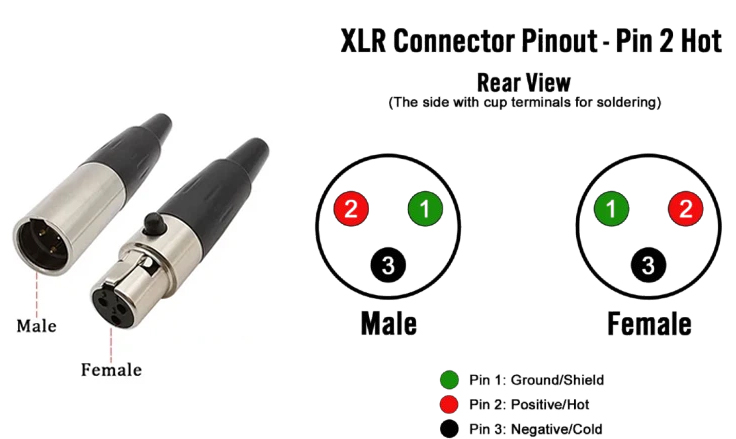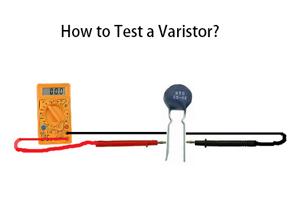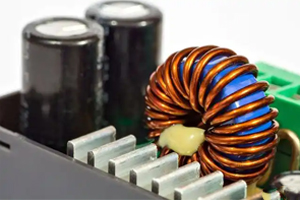XLR Connectors Explained: What Makes Them the Pro’s Top Choice
Author:admin Date: 2025-07-29 06:37 Views:492
Introduction
An XLR connector is a type of plug that’s commonly used in setups where clear, high-quality audio is a must. You’ll often see them in places like recording studios, live concerts, or broadcast rooms, connecting things like microphones, mixers, and speakers. What makes XLR connectors stand out is their ability to carry balanced audio signals, which helps cut down on unwanted noise. They also have a sturdy, locking design that keeps them securely in place, even during heavy use. Whether you are running sound for a live event or setting up a home studio, XLR connectors are a trusted go-to for reliable audio connections.
Parts of an XLR Connector
The XLR connector pinout and wiring diagram show how the connector has several parts. These parts are crucial to how it works. They include:
Insert
This essential component houses the pins responsible for carrying the electrical signals. In a standard three-pin XLR setup, pin 1 serves as the ground, pin 2 carries the positive or “hot” signal, and pin 3 handles the negative or “cold” signal.
Housing
The XLR male connector will also have a housing. It is basically the outer casing that protects and holds the insert. Its job is to also protect any other internal components from damage.
Bushing
This component slides over the connector insert and secures it when it is plugged in. This is what offers the locking mechanism for holding the plug in place.
Chuck or Strain Relief
It is located at the cable entry point to provide strain relief. The aim is to keep the cable from easily being pulled out and damaging the internal components.
Pins
These are the small metal prongs inside the insert. Their work is to make contact with the other corresponding pin on the receiving connector.

Types of XLR Connectors
You are likely to come across different types of XLR connectors. They are mostly categorized based on the number of pins. The famous one is the 3-pin XLR connector. It is mostly used for balanced audio connections such as line-level signals and microphones.
The 4-pin XLR connectors can be used for intercom systems and some power applications involving DC power.
The 5-pin XLR connectors are found in DMX lighting control systems and sometimes in stereo microphone connections.
The 6-pin and 7-pin XLR connectors might be less common, but they are often used for broadcasting equipment or connecting power and audio transmission in a single connector.
Mini XLR connectors are the smaller factor of the standard XLR connectors. They work well with compact audio equipment.

Common Uses of XLR Connectors
Professional audio, such as microphones. The 3-pin or 5-pin XLR connector comes in handy for connecting microphones to mixers or preamplifiers. If your setup is professional audio, you might consider an XLR connector.
You are likely to get them also being used for mixing controls, audio interfaces, amplifiers and speakers, studio monitors, and headphone amplifiers.
The other popular application of the XLR connector is when you use it for lighting. For example, DMX lighting control systems use the XLR connector for transmission of digital control signals to lighting fixtures.
The connector can also be used for intercom systems. This is especially for broadcast and live event setups. This helps with communication between different locations.
Sometimes the connector can be used in medical and industrial applications. This is where the application requires a reliable and robust connection.
XLR Connector Pin Configuration
We will consider a standard 3-pin XLR connector to understand what each pin is supposed to do.
Pin 1 is the ground or shield of the connector. It provides a path for the electrical noise to be discharged safely, thus reducing interference.
Pin 2 is the hot or positive of the connector. It carries the positive phase of an audio signal.
Pin 3 is the cold or negative. Its job is to carry the negative phase of the audio signal, which is 180 degrees out of phase compared to the positive signal.
If there are more pins, they would be tailored to more applications. But the first 3 pins are likely to have a similar set of applications.

Benefits of XLR Connectors
- The regular or low-profile XLR connectors both offer balanced audio and noise reduction capabilities. That is, they can be used for balanced audio connections for two identical signals that are out of phase with each other.
- It is possible to run longer cables without worrying that there will be a significant signal degradation or noise pickup. Compared to RCA, XLR connectors handle long distance better.
- You also get a better way to secure a connection because these connectors come with a latching mechanism. This provides you with a secure and reliable connection that prevents potential accidental disconnection.
- The XLR connectors can also carry phantom power. This is the kind of voltage used for operating condenser microphones, making them more versatile for different applications.
- How about durability? Whether it is a normal or right-angle XLR connector, it is always built to be more robust than the other connectors. This should make it work better even in demanding environments.
How XLR Connectors Prevent Noise And Interference
Now that you know what is an XLR connector, next is to understand how it prevents noise and interference to make it a popular choice.
Balanced Audio Transmission
XLR connectors are built to offer balanced audio signal transmission. This means that the signal is sent over through two cables, that is pin 2 and 3, but they have opposite polarities.
When the receiving device receives the signals, they are combined to become one signal. This process helps to cancel out the noise introduced in the signals during transmission, preserving the original audio signal.
Shielding
The metal housing of the XLR connector works as a shield against electromagnetic and radio frequency interference.
Pin 1 of the XLR connector is usually connected to the metal housing, which now creates a path for grounding the interference. This further reduces the impact on the audio signal.
Cable Length
The cable length is also important for noise reduction. It is recommended to keep the cable length minimum, especially for applications with many interference sources.
Longer cables are more likely to pick up noise, even though XLR connectors offer better balanced transmission and shielding.
Other Interference Reduction Features
Ferrite beads can also be used for suppressing high-frequency interferences in the XLR connectors.
We also recommend proper cable routing away from the power cables and other sources to minimize noise and electromagnetic interference.
Tips for Choosing the Right XLR Cable
There are many XLR connectors and cables on the market. How would you choose the correct one?
Length
It depends on the application. Some work best with shorter cables, while others require longer cables. Short cables of up to 10 feet are suitable for studio setups where distances are minimal.
Longer cables over 25 feet should be built better to maintain signal integrity over long distances and reduce interference.
Build Quality
The overall build quality is vital in determining the performance of the connector. For example, you can get oxygen-free copper conductors that offer the best conductivity and signal clarity than standard copper.
Thicker jackets can also help with better durability and protection against wear and tear.
If you get gold-plated or silver connectors, the better. This is because they also offer superior conductivity and corrosion resistance.
Shielding
Braiding copper shielding is one of the most common ways of shielding in XLR connectors. This type of shielding is great for protection against electromagnetic and radio frequency interference.
Foil wrapping is another alternative to braided shielding. The two can be used together to further minimize interference.
Conductor Material
Oxygen-free copper is usually used in XLR connector cables. This is a popular choice because it offers impressive conductivity and improves signal clarity.
Connectors
The XLR connectors must be just as good as the XLR connector wiring. That is why choosing the gold-plated or silver connectors offers the best performance. Also, choose options with robust metal housing durability for more protection of the connectors.
Conclusion
XLR connectors play a vital role in various setups, particularly in environments where high-quality audio and video gear is used. That is how they are common in studios or stages. The type of XLR connector determines how you can use it. There are some meant for audio setups while others can transmit even power. So, choose your new cable accordingly. Consider how to care for them as well to ensure you always get the best performance.
Please send RFQ , we will respond immediately.
Frequently Asked Questions
1.Why are XLR cables used for professional setups?
This is because XLR cables can carry balanced audio signals. This makes it possible to minimize interference and noise over long distances. This makes them the best choice for live sound, studio recording, and broadcasting.
2.Is there a difference between TRS and XLR connectors?
Yes, they are both used for carrying balanced audio signals. XLR connectors offer a more durable connector and can be locked with a latch to hold the connector in place. The TRS connector looks like a standard headphone jack. It is often a
choice for small devices or semi-professional setups.
3.How long can an XLR cable be used without signal loss?
XLR cables are usually long and can run up to 100 feet without noticeable signal degradation, especially when using high-quality shielded cables.


